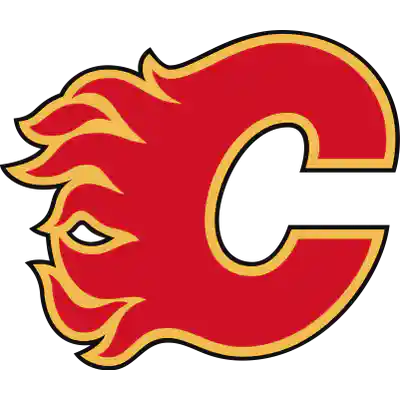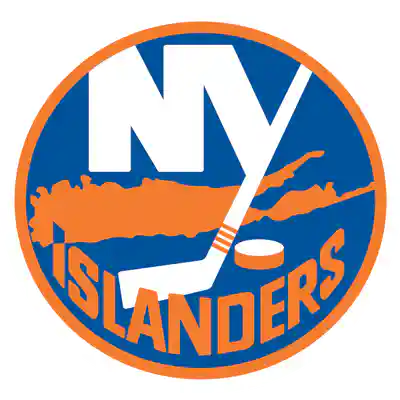NHL Lines Today
For DFS players and sports bettors alike, every day feels like the playoffs with the hottest NHL lines hitting our screens. And you already know we’re all angling to win against the odds, so listen up. Whether you’re a veteran DFS player or a die-hard Canucks fan placing your first wager, there are plenty of strategic moves that can help you come out on top after the final whistle-blow. Remember to ask yourself: “How will tonight’s NHL line combos impact your lineups?” and find all the answers below on this page.
Round out your NHL line combo know-how with our in-depth look at how Canadian bettors can take advantage of NHL starting lineups when drafting their rosters. We’ll cover the basics of NHL line combinations and explore how DFS players stay a step ahead by staying on top of daily NHL lines.
Understanding NHL Line Combinations
On this page, we dive into the players we expect to see hit the ice soon. Stick with us to find out how teams’ rosters affect NHL line combinations!
Active Rosters
NHL teams are allowed up to 23 players on their active rosters, with a catch: the players’ total salaries must be below the current salary cap ceiling. This means that if there’s a lineup of expensive MVPs, teams will have fewer than 23 players on their roster to stay salary cap-compliant. However, it’s rare for a team to play with fewer than 20 players due to injuries or salary cap limitations.
Active rosters often change due to trades, injuries, or call-ups from the minor leagues. As such, DFS players should keep an eye out for a team’s latest roster changes to ensure their entire lineup is active.
From each team’s active roster, they’re allowed to ice 20 players each game. Usually, teams have 12 forwards (four lines), six defensemen (three pairs), and two goalies. One goalie will start the game while the other goalie warms the bench, ready to skate in if the starter is injured or plays poorly.
Why Do Coaches Change Line Combinations?
When coaches change their line combinations, it’s usually due to injuries, but sometimes it’s to better support the other players. The most common alternate formation is 11 forwards and seven defensemen and is most frequently employed by coaches who give their fourth line limited ice time.
Sometimes, coaches will even switch up their lines while the players are duking it out on the ice. Talk about a game-time decision! Of course, we can expect changes in the lineup after an in-game injury, but coaches may also switch things up by responding to an opponent’s match-up or double-shifting a player who is crushing it to give him extra ice time.
Daily NHL Lineup Player Positions
NHL lines refer to a group or “shift” of three players: a left winger, center, and right winger. Additionally, defensemen play in a “pair,” with a left and right defenseman protecting the net. In this section, we’ll examine how lineups are constructed, including the all-important power play.
Forwards
In most cases, coaches deploy 12 forwards spread over four lines, each comprised of a left winger, center, and right winger. The primary duty of the forwards is to generate scoring chances and, hopefully, goals. While players don’t hold these positions as rigidly as the old mechanical table hockey games, they’ll line up in their set positions for face-offs and have a general responsibility to look after their designated section of the ice.
The center takes most face-offs and is also expected to contribute more than the wingers on the defensive side of the puck. The wingers are generally expected to provide more physicality—whether during puck battles along the sideboards or chasing down pucks on the forecheck after being lobbed deep into the offensive zone.
How to Read Forward NHL Lines & Play Strategy
A team’s four lines are typically listed in order of how much ice time they will receive. The “top six” refers to the players on the first two lines, who are expected to generate the lion’s share of the offence. During the power play, where the team plays with one or two more skaters than the opposition, the top six usually receive the most of the available minutes.
The third line is often seen as a checking line and has the critical task of preventing the other team’s top players from scoring. The best third lines snag their share of goals by exploiting their opponents’ defensive vulnerabilities.
To round out the roster, the fourth line usually plays significantly less time but is stacked with heavy hitters with the sheer physicality to wear down the opposition while providing another iron wall of defense—giving the top forwards a rest. Penalty killers, who try to stop opposing power plays from scoring, usually play on the third and fourth lines.
Can Forward Lines Change?
Among forwards, there is a fair amount of interchangeability within NHL line combinations, and they’re frequently shuffled up and down the lines depending on the active roster and the coach’s strategy. On top of dealing with injury absences, coaches sometimes move a center to the wing or switch a winger from one side to the other. Rarely do we see a winger move to the center. All of these changes can occur from one game to the next—or even during a heated battle on the ice.
How do Forward Lines Affect DFS Strategy?
By monitoring each team’s daily forward lines, DFS players can make high-value plays by drafting their lineup with the most up-to-date player information whether it’s 10:00 AM or 10:00 PM ET. For example, if a forward moves into the top six, they will have a higher possibility of scoring points, and DFS players taking advantage of this knowledge can line up their A team.
A popular strategy for DFS players is to “stack” forwards by choosing two or even three players from the same line. Since up to two assists are awarded per goal, multiple players on a line can earn DFS points from a single goal.
Defensive Pairings
Most teams will deploy three defense pairs, with a left and right defenseman in each pair. While their primary role is to prevent the other team from scoring, well-rounded defensemen are also powerful point and shot producers.
How do Defensive Pairings Affect DFS Strategy?
DFS players should generally focus on players referred to as “offensive defensemen” who receive significant power-play time. These players’ roles are usually well-defined, and their past performances are a strong sign of their future performance.
Plus, blocking shots, defensemen’s specialty, is an invaluable trait in daily fantasy hockey. But as the busiest shot-blockers are usually “defensive defensemen,” they don’t contribute much in terms of offense.
Power Play
When the NHL assesses a penalty, the offending team must play one man short for two minutes or until a goal is scored. This 5-on-4 skater advantage is called a “power play” and creates a significant advantage to generate goals and shots.
Occasionally, when a major penalty occurs, the player’s assessment will last five minutes and won’t end even if a goal is scored. If a team takes a penalty while already a man short, it creates a two-man advantage. However, no team will ever play with fewer than three skaters and a goalie on the ice, so they may defer these penalties.
On average, teams can take advantage of three power plays per game and typically score during 20 percent of their power play opportunities. Coaches generally form two power play units with their best offensive players. Often, each unit is comprised of four forwards and one offensive defenseman, and the first unit will usually see significantly more ice time than the second.
Power Plays and DFS Strategy
Success rates of the power play drastically vary from team to team. As such, DFS players should lock down the teams with the best power plays and determine which ones had the most power play chances. Watching for teams with strong a power play matched up against teams with weak penalty kills is a super solid strategy for DFS players trying to get a leg up on the competition.
With power plays, our regular lines are thrown out the window. When setting their daily NHL lines, DFS players should prioritize forward groups and players who clock in significant power play time. Not to mention, defensemen are instrumental in generating shots and setting up their teammates for scoring opportunities while controlling the puck from near the blue line—earning the nickname: “power play quarterback.”
Goalies and DFS Strategy
Choosing a winning goalie is crucial for DFS players setting their NHL line combinations. From the Colorado Avalanche to the Dallas Stars, almost all NHL teams have two goalies on their roster at any given time—a starter and a backup. In most cases, the starter will play about two-thirds of the game while the backup warms the bench.
How often does a goalie play consecutive nights? Almost never! This means that DFS players should be mindful of any teams playing back-to-back games—especially those on the road. Most teams will announce their starting goalie after their game-day morning skate. But when they skip these announcements, DFS players can still watch for the first goalie to take to the ice during warmup.
To give the starter a breather, the backup goalie will almost always start one of the games and can be an inexpensive pick-up for even inexperienced DFS players. Typically, the starter will play the first game, but if they’re facing a powerful opponent second, this can change at the drop of a hat trick. Since the backup goalie often plays against weaker teams, they can stockpile super solid stats and records, offering substantial value to DFS players setting their daily NHL lines.
NHL Line Combinations FAQ
How do line changes work in the NHL? Hockey is a rare sport where players can switch positions and lines mid-play; however, not everyone in the line has to change at the same time.
Before each game, coaches must set a lineup of a maximum of 18 skaters and two goalies, with these skaters making up four forward lines and three defense pairings. Coaches sometimes “juggle” these lines if they lose a player to injury or wish to double-shift someone who’s playing especially well.
Why do coaches change hockey lines? There are serval reasons why coaches would change their line combinations. Sometimes, it’s out of necessity due to injury. Other times, they may want to set up a particular matchup against the opposition. But it doesn’t end there.
Coaches can also change their lines to spark chemistry amongst teammates. Pairing a player in a scoring slump with a high-scoring teammate or reuniting players who were successful duos in the past is a power move for coaches to change lines in their favor.
Keep in mind that the home team has the advantage of the last line change before the face-off, making it easier for home teams to secure their preferred matchups. As NHL line combinations change frequently, DFS players should always find the most up-to-date information.































